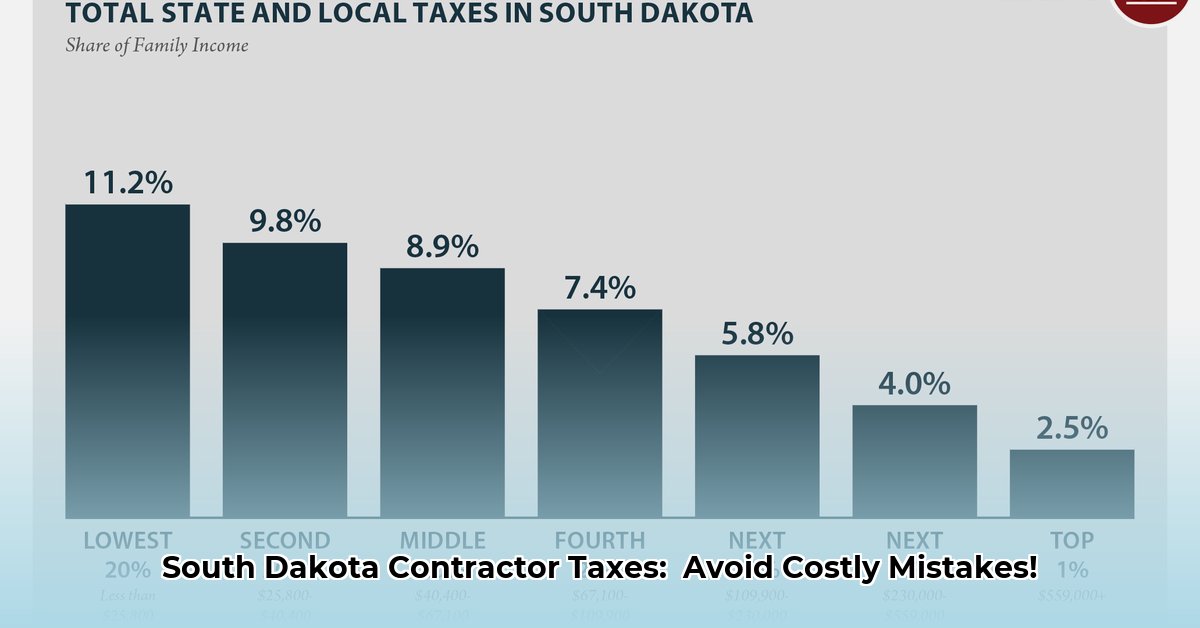
Navigating South Dakota's contractor excise tax can be complex. This guide simplifies the process, providing clear steps for compliance.
Understanding South Dakota's Contractor Excise Tax
South Dakota imposes a 2% excise tax on most construction projects' gross receipts (total income, including sales tax). This applies to both general contractors and subcontractors. However, the application of this tax depends heavily on the project's classification.
Project Classification: Qualified vs. Non-Qualified Utility Projects
The primary factor determining your tax obligations is whether the project is a "qualified utility project" as defined by the South Dakota Department of Revenue (SD DOR) 1. This encompasses projects like major water pipelines or power lines. Funding sources and payment structures significantly influence this classification. Careful review of project details is crucial. Ambiguity should prompt consultation with the SD DOR.
Exemption Certificates: Protecting Subcontractors
Subcontractors are generally protected from paying the excise tax twice by obtaining a valid exemption certificate from the general contractor. However, an improperly completed certificate renders this protection useless. Ensure all details—including the general contractor's license number and accurate project information—are meticulously correct. Maintaining a copy of the certificate is also highly advisable.
Owner-Furnished Materials: Clarifying the Tax Implications
The treatment of owner-furnished materials in excise tax calculations depends on the project type. Accurate record-keeping of these materials is essential for precise tax calculations.
Simplifying Bids: The 2.041% Bid Factor
To streamline bidding, contractors can incorporate the 2.041% excise tax rate directly into their estimates. This adds the tax to the initial cost estimate, minimizing unexpected tax liabilities later. This can be useful if the project type is clearly non-qualified.
Record Keeping: Prevention is Key
Maintaining detailed records of income, expenses, materials, and labor is vital for successful compliance and for an effective defense in case of an audit. Using tax software can significantly simplify this process.
Four-Dwelling Exemption for Residential Builders
Contractors building owner-occupied, single-family homes with four or fewer dwelling units may qualify for a tax exemption. Thorough verification to meet all exemption conditions is necessary.
Steps to Easy Excise Tax Compliance
Follow these steps to ensure smooth compliance.
Classify Your Project: Accurately determine if your project is a qualified or non-qualified utility project. Refer to SD DOR guidelines for clarification 1.
Obtain Exemption Certificates (if applicable): If you're a subcontractor, ensure you have a valid exemption certificate from the prime contractor. Verify its completeness and accuracy.
Maintain Meticulous Records: Keep accurate and comprehensive records of all project-related financial information.
Utilize the Bid Factor (if appropriate): Incorporate the 2.041% bid factor when estimating to account for the excise tax.
Seek Expert Guidance: Consult the SD DOR website 1 or a tax professional when needed.
Potential Pitfalls and Mitigation Strategies
Understanding potential problems and implementing preventive measures is smart business practice.
| Risk Category | Likelihood | Impact | Mitigation Strategy |
|---|---|---|---|
| Misclassifying a Project | High | High | Thoroughly review project specifics; consult the SD DOR or a tax professional. |
| Subcontractor Compliance Issues | Medium | Medium | Verify exemption certificates; maintain clear communication with subcontractors. |
| Poor Record Keeping | Medium | High | Employ a robust record-keeping system; consider specialized tax software. |
| Audit Issues | Low | High | Maintain precise records; initiate proactive communication with tax authorities. |
How to Obtain a South Dakota Contractor Excise Tax Exemption Certificate
The procedure for obtaining an exemption certificate depends on project classification.
Determine Project Type: Accurately classify your project as qualified or non-qualified per SD DOR guidelines.
Gather Necessary Documents: Collect all relevant project documentation (contracts, etc.).
Contact the SD DOR: Confirm the needed documentation and application procedures.
Complete the Application: Thoroughly fill out the necessary application forms available on the SD DOR website 1.
Submit the Application: Send in the completed application and any required paperwork.
Review the Certificate: Once received, check for accuracy and discrepancies, and keep a copy for your records.
Key Takeaway: Proactive planning, detailed record-keeping, and expert consultation minimize the complexities of South Dakota's contractor excise tax system.